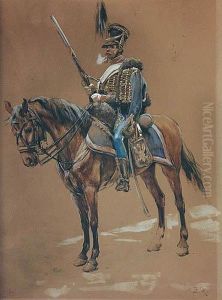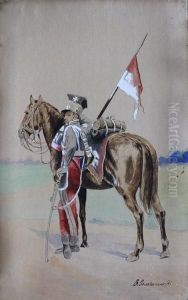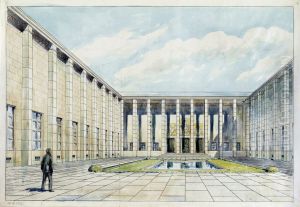Bronislaw Gembarzewski Paintings
Bronisław Gembarzewski was a Polish artist, military officer, and director of the Polish Army Museum. Born on January 14, 1863, in Warsaw, which at that time was part of the Russian Empire due to the partitions of Poland, he grew up during a period of significant national strife and a resurgence of Polish cultural identity.
Gembarzewski pursued a career in the military, joining the Russian Army, where he served as an officer. Despite his military background, he harbored a strong passion for art and history, particularly that of military subjects. He was influenced by the Polish positivist movement, which emphasized the importance of cultural work and the preservation of national heritage as a form of resistance against foreign oppression.
In addition to his military duties, Gembarzewski became deeply involved in the study and documentation of Polish military history. His dedication to this field led to his eventual appointment as the director of the Polish Army Museum in Warsaw, a post he held from 1913 to 1939. Under his leadership, the museum expanded its collections and became a significant institution for preserving and promoting the history of Polish military endeavors.
Gembarzewski was also a prolific author, writing numerous books and articles on the subjects of Polish military uniforms, fortifications, and the history of specific military units. His works are considered valuable resources for historians and enthusiasts of military history. He meticulously documented various aspects of military life, contributing to the broader understanding of Poland's military heritage.
During his tenure at the Polish Army Museum, Gembarzewski was instrumental in collecting artifacts, paintings, and documents related to Poland's military past. He worked tirelessly to ensure that the memory of Polish soldiers and their contributions to the nation's history were honored and remembered.
Bronisław Gembarzewski's life was a testament to his dedication to both his military career and his cultural pursuits. His work bridged the gap between the armed forces and the academic world, illustrating that the study of military history is crucial to the understanding of a nation's identity and legacy. He passed away on July 15, 1941, in Warsaw, during the grim period of World War II. Despite the difficult times he lived through, his contributions to Polish culture and history have left a lasting impact.


